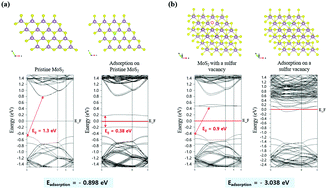Effect of large work function modulation of MoS2 by controllable chlorine doping using a remote plasma†
Abstract
Adjusting the intrinsic properties of 2-dimensional (2D) transition metal dichalcogenide materials is important for their various applications in electronic devices. Among them, molybdenum disulfide (MoS2) is one of the most attractive layered 2D materials because of its excellent electrical properties as well as good thermal and oxidation stability. Controlling the doping process and analyzing how the dopant atoms affect the device properties are crucial for advanced applications of TMDs. In this study, a simple and controllable chlorine doping method of MoS2 using a remote inductively coupled plasma (ICP) was studied and the effect of doping on the properties of MoS2 was investigated by adjusting the work function of MoS2. Kelvin probe force microscopy (KPFM) shows a gradual decrease of the work function with increasing chlorine radical treatment time. Chlorine doped MoS2 field effect transistors (FETs) exhibited improved electrical characteristics such as the field effect mobility and on current level as demonstrated by the transfer characteristics (Id–Vgs). Especially, the chlorine doped MoS2 FETs showed increased photoresponsivity by 1.94 times (from 424 to 824 A W−1) for green light (λ = 520 nm) and, much more interestingly, 8.59 times (from 37.6 to 323 A W−1) for near-infrared (NIR) light (λ = 785 nm).



 Please wait while we load your content...
Please wait while we load your content...